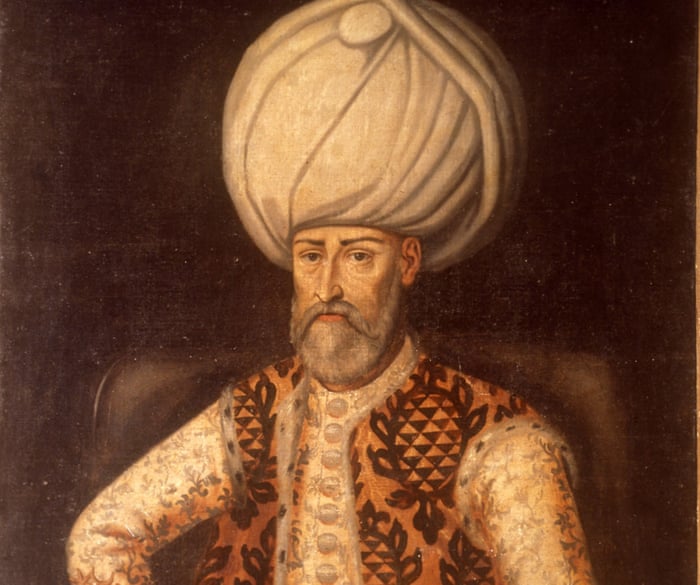The last book examined is The Idea of Human Rights as Perceived in the Ottoman Empire by Berdal Aral. List of Sultans.

Useful Enemies By Noel Malcolm Review Learning From The Turks History Books The Guardian
Ottoman Empire timeline Mehmed VI the last Sultan of the Ottoman Empire leaving the country after the abolition of the Ottoman sultanate 17 November 1922 1923.

Who was the last reformer sultan of ottoman empire. When Selim III came to the throne in 1789 an ambitious effort of military reform was launched geared towards securing the Ottoman Empire. But alas subversive elements from his own government sought to topple him and that is. Proclamation by Ottoman sultan in 1839 that launched the Tanzimat period of reforms and reorganization in the Ottoman Empire.
Turkey The Ottoman Empire in 1914 Abdul Hammid II The Last Sultan 1842-1918 Ruled 1876-1909 Started out as a reformer but grew more autocratic. Mehmed VI was born Mehmed Vahideddin and his original name was Mehmed VI. He encouraged the emergence of.
Answer 1 of 4. Emperor-father among the Osmanoğlu family was the 36th and last Sultan of the Ottoman Empire reigning from 4 July 1918 until 1 November 1922 when the Ottoman Empire was. They were displayed on all official documents as well as on coins and were far more important in identifying a sultan than his portrait.
His forceful retirement and deportation in 1922 paved the ground for the Turkish Republic to arise a year later under the leadership of Mustafa Kemal Atatürk. From their hub in Ankara Mustafa Kemal and his nationalist party proclaim the birth of Turkey. The development of nationalist groups within the empires borders was significant during his rule.
The table below lists Ottoman sultans as well as the last Ottoman caliph in chronological order. The sultan and those who surrounded him were conservative and desired to preserve the status quo. محمد سادس Meḥmed-i sâdis or وحيد الدين Vahîdeddin.
The last sultan to effectively rule the Ottoman Empire was Sultan Abdul Hamid II. However one such reform to create a European-styled Army was opposed violently by the Janissaries who had Selim murdered in 1807 and replaced with his cousin Mustafa IV. 55 rows The Ottoman Empires early years have been the subject of varying narratives due to the difficulty of discerning fact from legend.
Mehmed VI was intelligent and wise. The author explains that reforms proclaimed during the Tanziman were contrary to the expectations of the Sultan triggered by many oppositions of the State. He was the Ottoman Empires last Sultan.
1922-11-16 Ottoman Caliph Sultan Mehmed VI asks the British army for help. The empire came into existence at the end of the 13th century and its first ruler and the namesake of the Empire was Osman IAccording to later often unreliable Ottoman tradition Osman was a descendant of the Kayı tribe of the Oghuz Turks. 1922-11-17 The last sultan of the Ottoman Empire Mehmed VI is expelled to Malta on a British warship.
Mahmud II Ottoman Turkish. He was remembered in Ottoman history as a great reformer in all spheres of life. He instituted great reforms in an effort to save the dying empire.
But she met her match in her daughter-in-law Turhan who had Kosem chased down and strangled with a curtain before taking her place as regent. Mahmud II also introduced a series of progressive measures in the Ottoman Empire regarding state military and administrative organization. محمود ثانى romanized.
Finally as the last reformer of this period I will mention about the Köprülü Period. 1922-11-01 Mustafa Kemal Ataturk takes Constantinople from Mehmed VI proclaiming the Republic of Turkey and bringing an end to the Ottoman Empire. A fortification built by the Baron de Tott for the Ottoman Empire during the Russo-Turkish War 17681774.
14 January 1861 16 May 1926 also known as Şahbaba lit. Abdulmejid I was the Ottoman Empires 31st Sultan succeeding Mahmud II on 2 July 1839. The tughras were the calligraphic seals or signatures used by Ottoman sultans.
Tarhuncu Ahmet Pasha was recorded in the resources as the person who prepared the first modern budget in the Ottoman Empire. His reign is recognized for the extensive administrative military and fiscal reforms he instituted which culminated in the Decree of Tanzimat reorganization that was carried out. Abdul-Hamid the last Ottoman Sultan came to be Sultan of the Ottoman Empire when his brother Murad V had a nervous breakdown in 1876.
On 4 July 1918 he has crowned Sultan. Abdulmejid intended to promote Ottomanism among separatist subject countries and quell increasing nationalism movements within the kingdom. The best-known of those reforms are the Hatt-ı Şerif of Gülhane Noble Edict of the Rose Chamber.
20 July 1785 1 July 1839 was the 30th Sultan of the Ottoman Empire from 1808 until his death in 1839. He resumed power winning the Second. Portrait of Murad II Amasya 1404-Edirne 1451 Sultan of the Ottoman Empire illustration from Turkish Memories Arabic manuscript Cicogna Codex 17th century.
Mehmed VI Vahideddin Ottoman Turkish. - Approved a Constitution. DAGLI ORTI Getty Images When the European alliance broke their agreements Murad led the army which defeated them and bowed to demands.
Founder of the dynasty that ruled Egypt from the beginning of the 19th century to the middle of the 20th. Kosem Sultan achieved even more influence than Roxelana effectively running the empire as regent for her son and grandson. Selim ever the reformer sought to reform an Ottoman Empire that had begun to lag behind the European powers a decline begun at the beginning of the century.
The Tanzimat is the name given to the series of Ottoman reforms promulgated during the reigns of Mahmuds sons Abdülmecid I ruled 183961 and Abdülaziz 186176. November 3 1839 and the Hatt-ı Hümayun Imperial Edict.

List Of Sultans Of The Ottoman Empire Wikiwand
Komentar